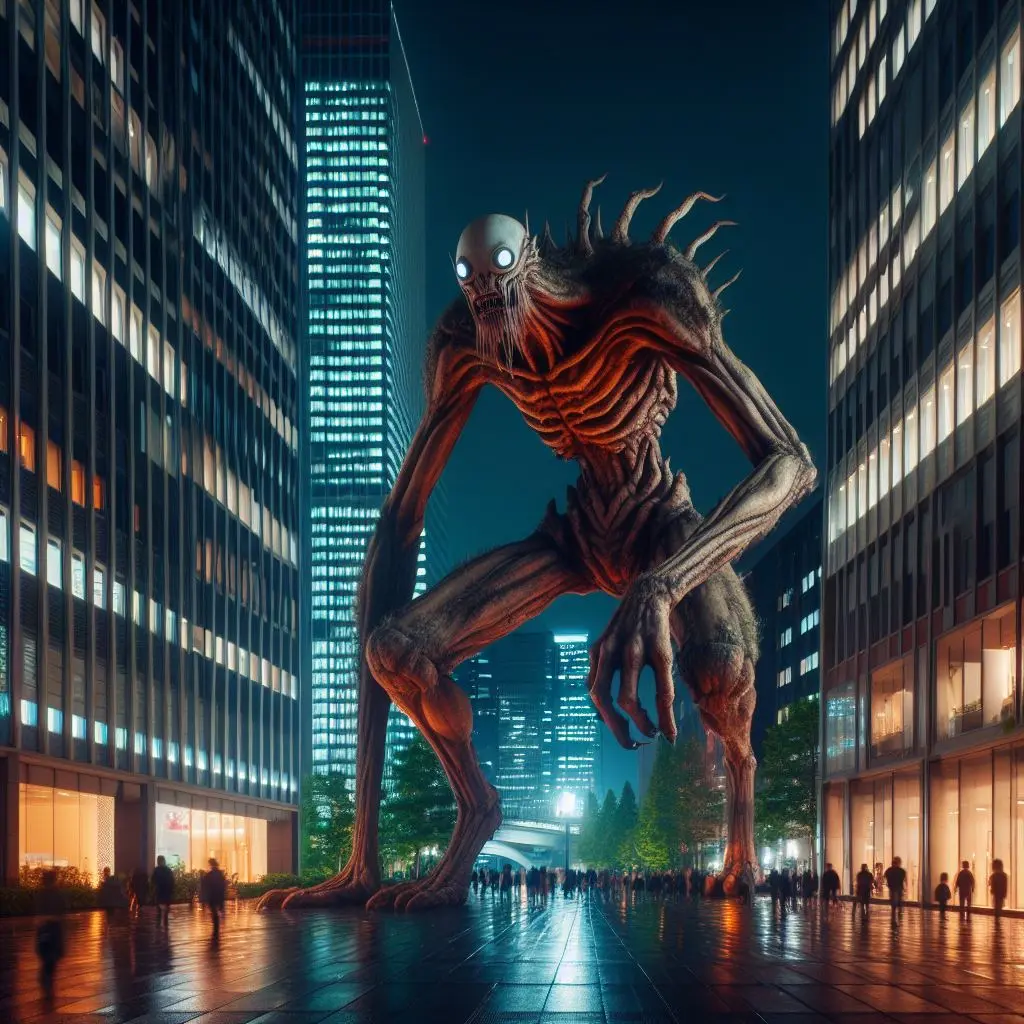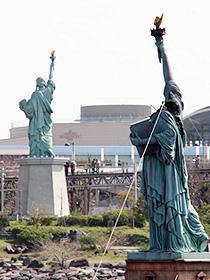Powerful images in POV + mockumentary format
The film is a mockumentary film about the “disclosure (or leak) of digital records stored at the Department of Defense.”
The story is straightforward: a giant monster appears during a farewell party for Rob, a young man who has decided to relocate to Japan, causing a panic in New York. Rob goes to rescue his girlfriend Beth, and his friend films the scene with a video camera.
The scenes of monsters destroying the city are powerful!
People flee as skyscrapers collapse and monsters glimmer in the shadows of buildings. Soon, armored vehicles appear, and the military opens fire. This area is based on footage from the 2001 terrorist attack on the United States, “9.11,” and the camera work changes so rapidly that it could be mistaken for proper documentary footage.
Furthermore, the POV method of Handycam filming blurs the screen, and the actors’ lines overlap, making it difficult to hear them, but the film conveys a sense of unparalleled realism. The cast, including Michael Stahl-David (Robb) and Odette Joostman (Robb), were selected from unknown actors at the time, and their pursuit of realism was evident.

Glad to see your affinity for Japan and Godzilla.
In the scene at the party where Rob celebrates his promotion to Japan, props symbolic of Japanese culture are used, such as noren (bamboo blinds), Japanese umbrellas, sushi, and sake. Also shown, for a brief moment, are a plastic tea bottle and a bottle of tabletop soy sauce, both familiar to all Japanese people.
The film is directed by Matt Reeves, known for “Planet of the Apes: New Age and The Holy War,” and produced by J.J. Abrams, known for “Mission: Impossible 3” and “Star Trek.” J.J. Abrams was promoting “Mission: Impossible 3.” Abrams got the idea for this film when he saw a Godzilla doll in Harajuku during his visit to Japan to promote “Mission: Impossible 3. Indeed, the music “ROAR!” that plays with the long, long end roll is also very similar to the music used in the Godzilla movie.
Incidentally, Michael Giacchino, who composed “ROAR!”, is a big fan of Godzilla movies. As a Japanese person, I am happy to see him express his respect for Japanese movies in this way!
Elaborate PR and backstage setting.
The trailer for the film featured a terrifying scene in which someone destroys the Statue of Liberty, and the severed head comes flying out. Before the film’s release in Japan, the lower part of the statue, from the neck down, was brought from the U.S. to Odaiba to be installed, surprising people.

What drew even more attention was a mysterious news video posted on YouTube. A fictitious news video was created, saying that a drilling rig at Tagluat (the Japanese company where Rob works) had been destroyed. I was impressed by the quality of the news video, which was produced in several languages, including Japanese, Italian, and French, and I wondered how much money and effort was spent on the film’s PR.
These PR strategies were likely successful, as the film grossed $80 million in the U.S. and 1.2 billion yen in Japan.
Of course, Tagluat is a fictitious company. However, the company’s official website has appeared on the Internet. It has been set up in great detail, including an overview of the company and stories about the mysterious CEO and the CEO’s mother.
Currently, a mysterious message (?) is being displayed on the Tugluat website. It is currently displayed on the Tagliato website. The company also has a commercial site for its flagship product, “SLUSHO!
A simple sci-fi panic film
The monster’s video recording is interrupted when the Central Park bridge is destroyed. Then, a scene appears in which Rob and Beth are enjoying a date on a Ferris wheel one month earlier. If you look closely, you will see a severe foreshadowing in it. If you are going to see the movie, observe.

After the end of the end roll, a voice saying “Help us” can be heard, but if this part is played backward, it can be heard as “It’s still alive.” This direction makes us expect a sequel, and it is a very elaborate trick that makes us expect a sequel. The person who found this is also quite amazing!
The story of this film is straightforward, and there is no dialogue or scenes that particularly resonate with you. The best way to enjoy the movie is not to think too hard but to be surprised by the large-scale science fiction scenes, to enjoy the respect directed toward Japan and Godzilla, and to find the riddles and backstories that someone has uploaded on the Internet.
Takeshobo publishes a novelized version of this work. On the back of the cover is an image of the monster’s entire body, which can only be seen in the Japanese edition at the behest of J.J. Abrams.
In manga form, “Cloverfield KISHIN” is also available from Kadokawa Shoten. The story is entirely different from the movie, but there are references to the Tagluat company. It may lead to a sequel that may be produced in the future.







